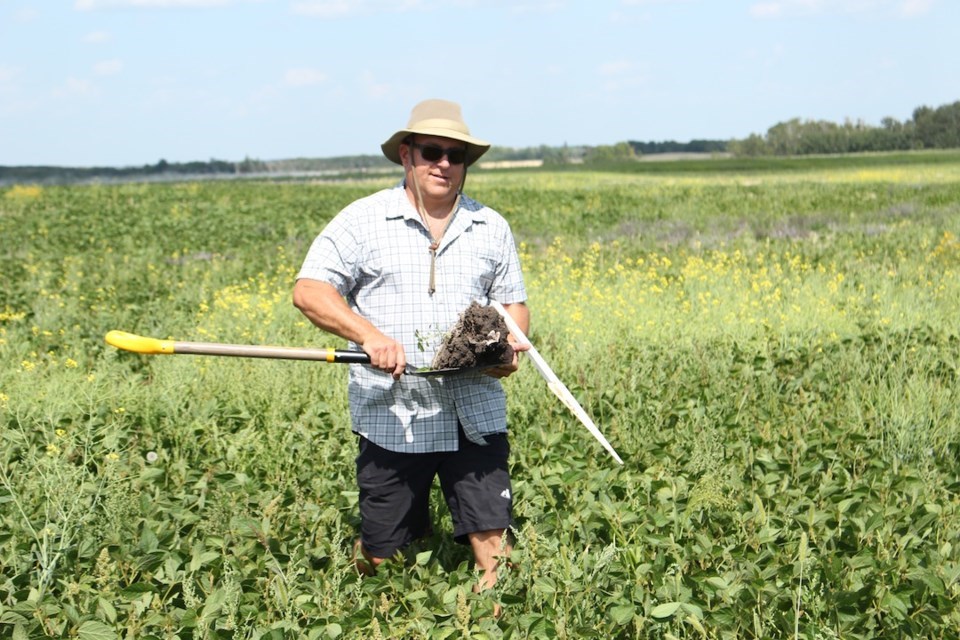YORKTON - In the local agriculture community Kevin Elmy is likely still remembered as a notable oat grower from Saltcoats.
Now retired from active farming Elmy has become a vocal proponent of changing how we farm – promoting the idea of ‘revitalizing spoils with regenerative principles’ – which is the subtitle to his recently released second book on the topic ‘Not Just Dirt’.
“This book was written with the intent of helping producers start a regenerative agriculture management system for their farming or garden operations. The principles are the same even in different parts of the world, with adjustments for the difference in scale and local plant species adaptation. The information provided reflects my personal views and experiences over the last twenty years across Western Canada and what I have learned from practitioners from around the world. I believe this information to be true at the time of writing,” details the preface of the book.
In a recent interview with Yorkton This Week Elmy said his new book is really a follow up to his earlier work Cover Cropping in Western Canada.
Elmy explained he has come to recognize that the principles of regenerative agriculture are highly adaptive in the sense they work in most locations – as he learned first hand spending time in Western Australia.
Recognizing the principles worked down under was a confidence builder that the system could work for most producers, offered Elmy.
It was important to to build his confidence because others were listening to his views on regenerative agriculture, and he wanted to be sure their confidence in him was warranted.
“If you’re going to jump out of plane you want to know the guy packing the parachute has some experience packing parachutes,” he said.
So that’s where the 20 years of practical experience using regenerative techniques -- such as grazing bison -- on the farm near Saltcoats built the foundation for the two books.
Elmy said being able to share real event stories is important because producers new to the system can avoid some pitfalls.
“I don’t want them making the same mistakes we did,” he said, adding that the practical aspects in the book are “. . . helping reduce the risk,” for this undertaking conversion.
In that regard Elmy said it is important to get the information out there for others to learn from.
Where the first book was more of a primer to the ideas of regenerative agriculture, the latest book is more of a guidebook to help producers develop core principles as a framework to change.
It will help create a management structure to follow, said Elmy.
Elmy said it is really important to have core principles because it is very much a shift in thinking in terms of how to farm.
Producers need something of a guide they can check back on to make sure they remain true to what can be a significant change in how they farm.
“Tradition needs to be questioned, why things are done a certain way. I enjoy trying new things, crops, management systems, and developing ways that make sense. Understanding why things are done and the thought patterns behind tells a story of the present. Rarely is something completely wrong, but even more rare is something that is close to perfect. Everything has the potential to get better, just need to stop making changes when it gets to the point where it is just micromanaging. In most cases where change is needed, it is our brain and attitude that needs to change first. It is human nature to resist change. And why change for the sake of change,” details the book’s preface.
While Elmy is a huge proponent of regenerative agriculture he notes so far few farmers have made the change.
“It’s still probably in that one per cent – maybe I’m dreaming at that,” he said, but he added “they are asking more questions,” and that is a start.

